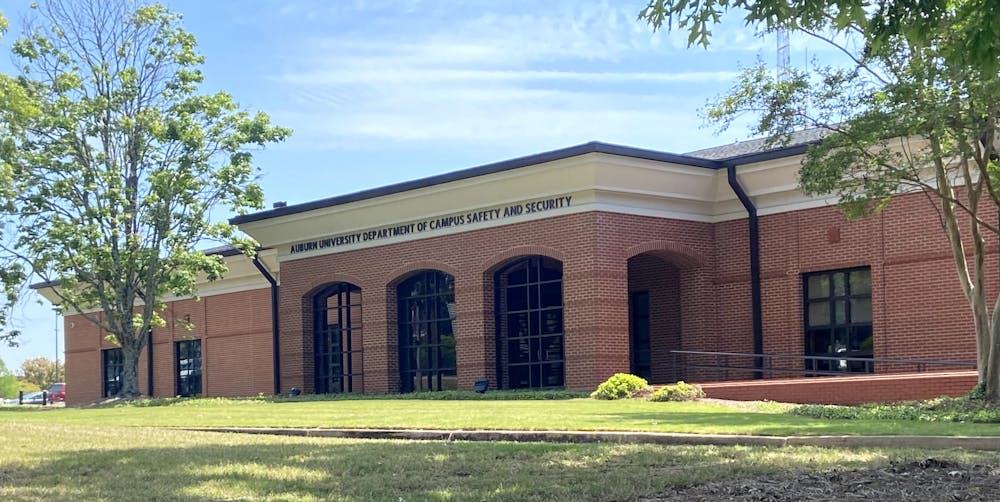As students begin their semester – whether it be their very first or their final here on the Plains – it is important to know how to stay safe on and off campus.
Auburn University’s Department of Campus Safety and Security, located at 543 W. Magnolia Ave., offers several mediums where students can get up-to-date information about potential threats, hazardous weather conditions or call a security shuttle as well as self-defense training and other accessible resources.
Director of Campus Safety and Compliance Susan McCallister and Public Information Officer Ashley Gann broke down six resources that have the potential to help all students who utilize them.
Safety Apps
“There are a lot of features in the Auburn Safety app,” McCallister said. “We also recommend the Auburn PSD app which is from the City of Auburn Public Safety Department. They work really well in conjunction with one another.”
McCallister noted that the Auburn Safety app only covers what is labeled as on-campus by the Clery Act (shown below), while the Auburn PSD app covers all of Auburn.
The Clery Act determines what is considered on- or off-campus at a university. This map outlines the boundaries of Auburn University.
The Auburn Safety app has many features that range from allowing users to report potential threats to student safety to offering proper guidance to someone in an emergency situation. The app also has a link to the campus’ weather station and a request for a security shuttle that allows the dispatcher to see the user’s location in circumstances where they are unsure of where they are at.
Resources to assist and report sexual violence are also available through the app, as well as access to the Suicide and Crisis Lifeline.
AU Alert
AU Alerts are sent out by Campus Safety and Security in “situations that require immediate action for your safety that are occurring on campus,” according to McCallister. These notifications are sent out most commonly through email, but students are encouraged to sign up for push notifications and text alerts.
“[AU Alerts are] not topical in nature. It is just anything emergency-related,” Gann said.
McCallister added that these alerts are sent out for threats that require immediate action. She provided examples of tornado warnings, gas leaks and active shooters as situations that would warrant the issuing of an AU Alert.
Campus Safety Notices and Advisories
While AU Alerts require immediate action to remain safe, Campus Safety Notices and Advisories are “more informational,” according to McCallister. These notices are sent out to students’ emails and oftentimes report instances of sexual assaults or druggings on campus.
“[Campus Safety Notices and Advisories] are about specific types of crimes that are occurring on campus that we are required to notify campus,” McCallister said.
McCallister said that these notifications are only sent out when a crime has been committed on campus and the assailant has not been apprehended.
These notices provide any information available at the time of its publishing. McCallister said if a good description of a suspect is provided, they will provide it in the notice and that tips on how to stay safe in circumstances like those outlined in the email are also provided.
Night Transportation Services
Night Transportation Services offer free, door-to-door transportation to students in need by highly vetted drivers. Gann said it was “like a free Uber.”
These shuttles, as noted earlier, are driven by individuals who have gone through background checks and are trusted by the University and have cameras to ensure that students receive the safest trip possible. GPS features also give Campus Safety and Security the ability to track these shuttles so that they do not go astray.
“You don’t have to wait at a bus stop, and it is door-to-door transportation,” Gann said. “But it is only on-campus. That’s the big thing.”
Given that these services are provided to on-campus locations only, they only transport students to areas outlined in the same Clery Act map shown under the Safety Apps heading.
Safe Exchange Zone
When items are purchased online or items need to be returned to an ex-partner, Safe Exchange Zones offer a location where these items can be exchanged on camera and directly by the Campus Safety and Security building where officers are on-site.
This zone consists of two parking spots closest to the Campus Safety and Security building on the Donahue Drive side and by the sidewalk that runs along Magnolia Avenue.
Training
“We’ve got the self-defense class for women that’s called RAD that is an hour credit course that is offered six times each fall and each spring,” McCallister said. “We also offer active shooter response training for students, first aid and CPR classes.”
Several other training programs are offered, including Stop the Bleed, which teaches students how to control bleeding in mass-casualty situations, and AED familiarization courses.
Campus Safety and Security also give safety talks to groups. They typically go over basic safety and security measures and information in these talks.
Do you like this story? The Plainsman doesn't accept money from tuition or student fees, and we don't charge a subscription fee. But you can donate to support The Plainsman.

Tucker Massey, senior in journalism, is the content editor for The Auburn Plainsman.





